Taranaki Tomokanga Restoration
During the last few days of spring 2022, a special carving restoration took place at Ōākura Pā in Taranaki.
By Niki Partsch
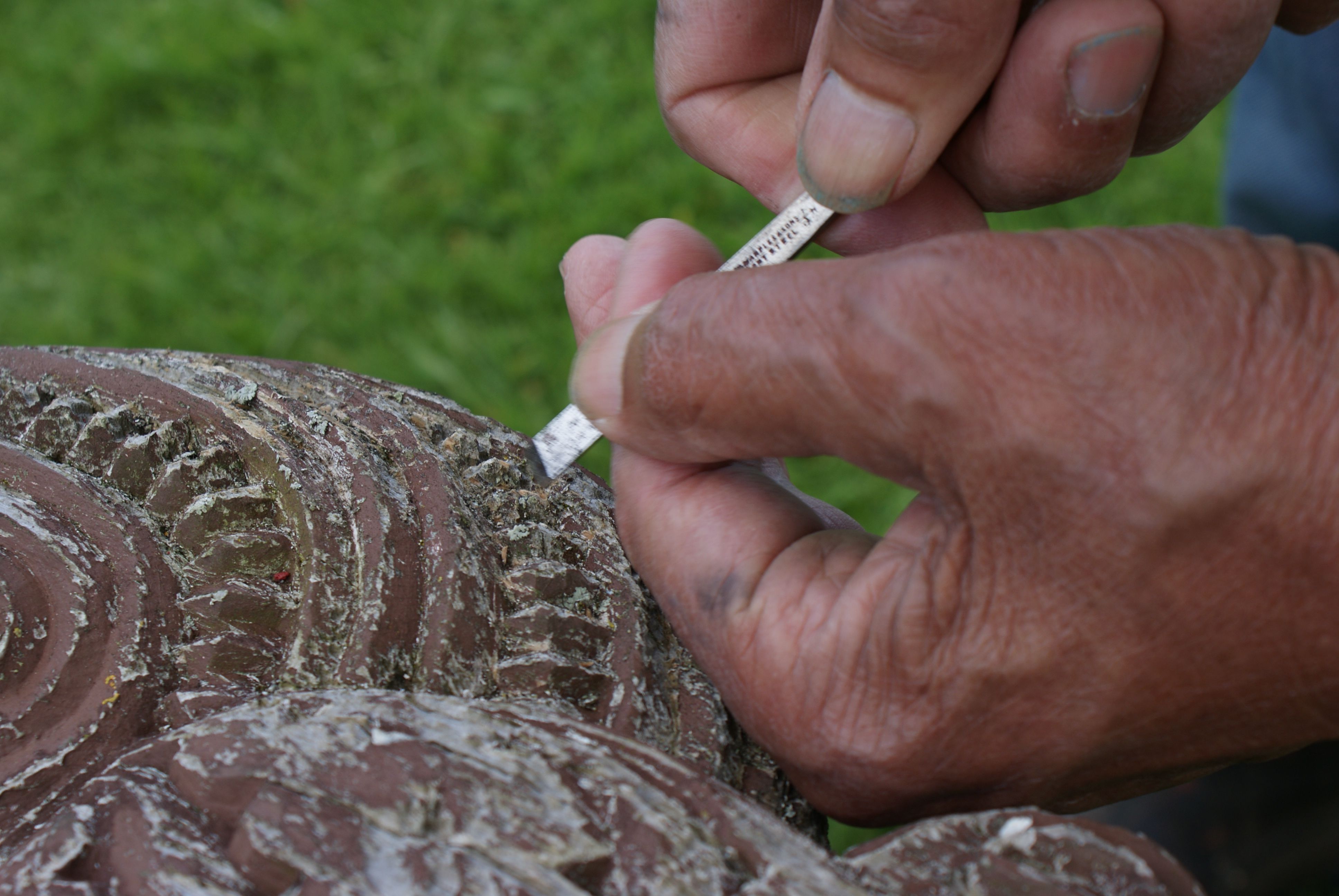
Whanau and visitors arriving at Ōākura Pā are greeted by the beautifully carved tipuna (ancestor) Tairi whose tekoteko (carved figure) stands at the apex of the tomokanga (entrance).
The maihi (bargeboards) depict the four coasts known as Te Tai Hauāuru, Te Tai Tonga, Te Tai Rāwhiti and Te Tai Tokerau. Two further tīpuna, Oakuramatapu and Okorotua are carved on the amo (front posts of the gateway).
But time, wind and sunshine have faded the painted timber, and moss and lichen has grown broadly across the carvings obscuring some of the detail. Like all weather-exposed structures, it required a good tidy up.
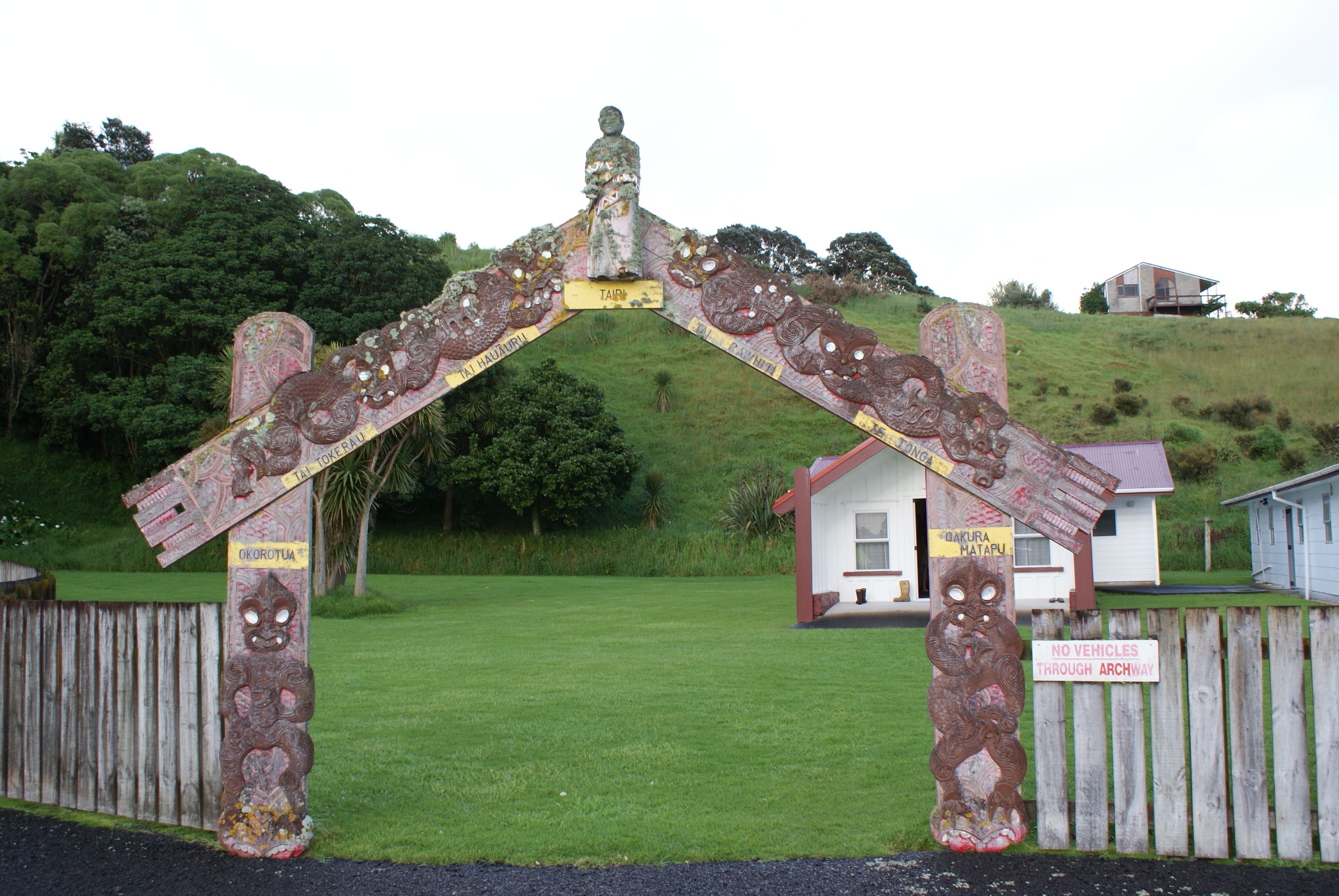

Whanau and visitors arriving at Ōākura Pā are greeted by the beautifully carved tipuna (ancestor) Tairi whose tekoteko (carved figure) stands at the apex of the tomokanga (entrance).
The maihi (bargeboards) depict the four coasts known as Te Tai Hauāuru, Te Tai Tonga, Te Tai Rāwhiti and Te Tai Tokerau. Two further tīpuna, Oakuramatapu and Okorotua are carved on the amo (front posts of the gateway).
But time, wind and sunshine have faded the painted timber, and moss and lichen has grown broadly across the carvings obscuring some of the detail. Like all weather-exposed structures, it required a good tidy up.

Ngāti Tairi and Ngā Māhanga a Tairi hapū whakapapa to this marae and so they, with support from Jim Schuster, Jasmine Hemi and Dennis Ngāwhare from Heritage New Zealand Pouhere Taonga, planned and undertook the restoration.
Scaffolding was set up for removing the carvings which were then placed on tables inside a marquee. Together they cleaned and stripped away dirt, flaky paint, moss and lichen. An application of wood preservative was applied, then followed with a primer and two coats of paint.
Colour matching the weathered paint was an important task because the original colours had faded and deteriorated. So, to recreate the original colours, they used some hidden and less exposed areas of original paint on the carvings as a starting point.
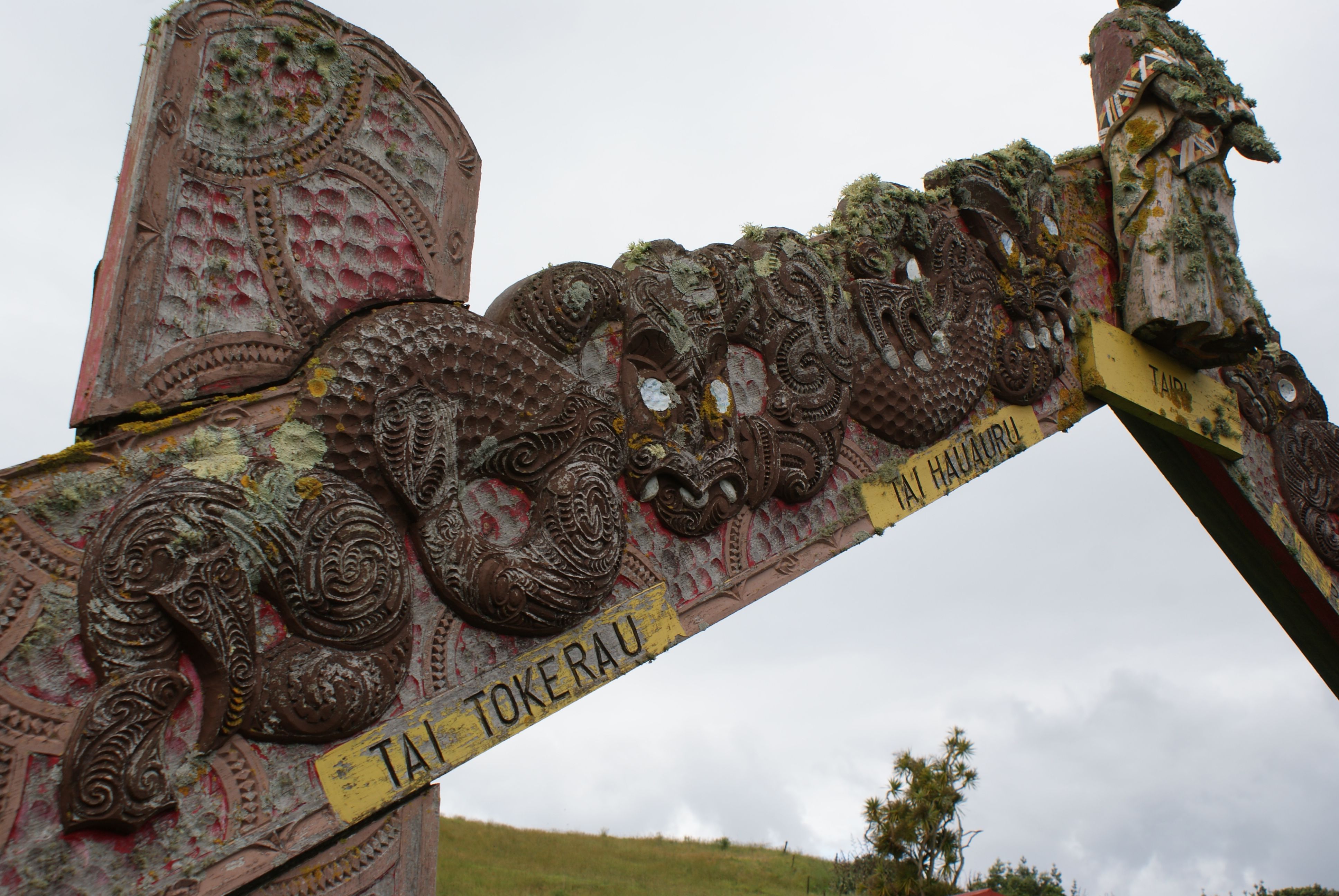
"What was good was the system of working. There was a rotation across the carvings, so once you got back to the carving where you started, the paint was dry and ready for another coat."
Jasmine, Pouārahi Māori Built Heritage
Although Tairi was relatively small compared to the other carvings, he required the most time to restore. His tāniko (cloak) alone took Jasmine, with the help of a whanau member, at least a day and a half to carefully paint.
Hidden beneath the moss and lichen and unknown to some whanau present was Tairi’s tāmoko (traditional facial tattoo). Jim, who is a traditional art specialist, had the pleasure of carefully restoring his dark green tāmoko. “Some people had never seen it before, so it was truly a special moment,” says Jasmine. As they worked on Tairi, they noticed that, with every repair, his smile grew.
Some whānau were able to be there every day, with others coming in to help after work. “It was an amazing group to work with,” says Jasmine, “The whānau looked after us well and the food was delicious.”
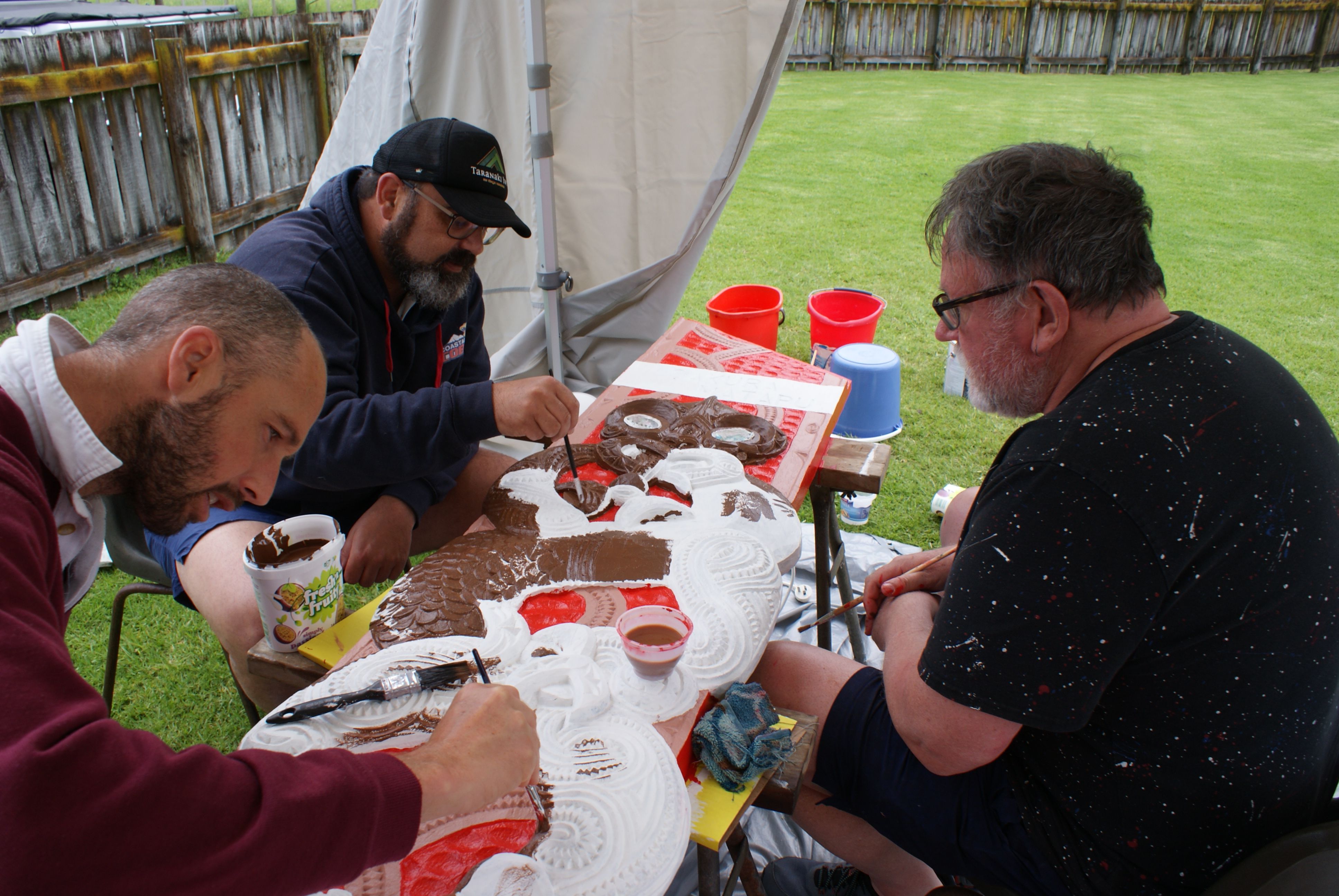
By the fourth day, the refreshed and repainted tomokanga was re-erected. At the apex the carvings of the tekoteko of Tairi is so fine, that even the bottoms of his feet and the folds of his taniko cloak are detailed, and so lifelike that it would seem like a strong gust of wind could make the folds of his cloak shift.
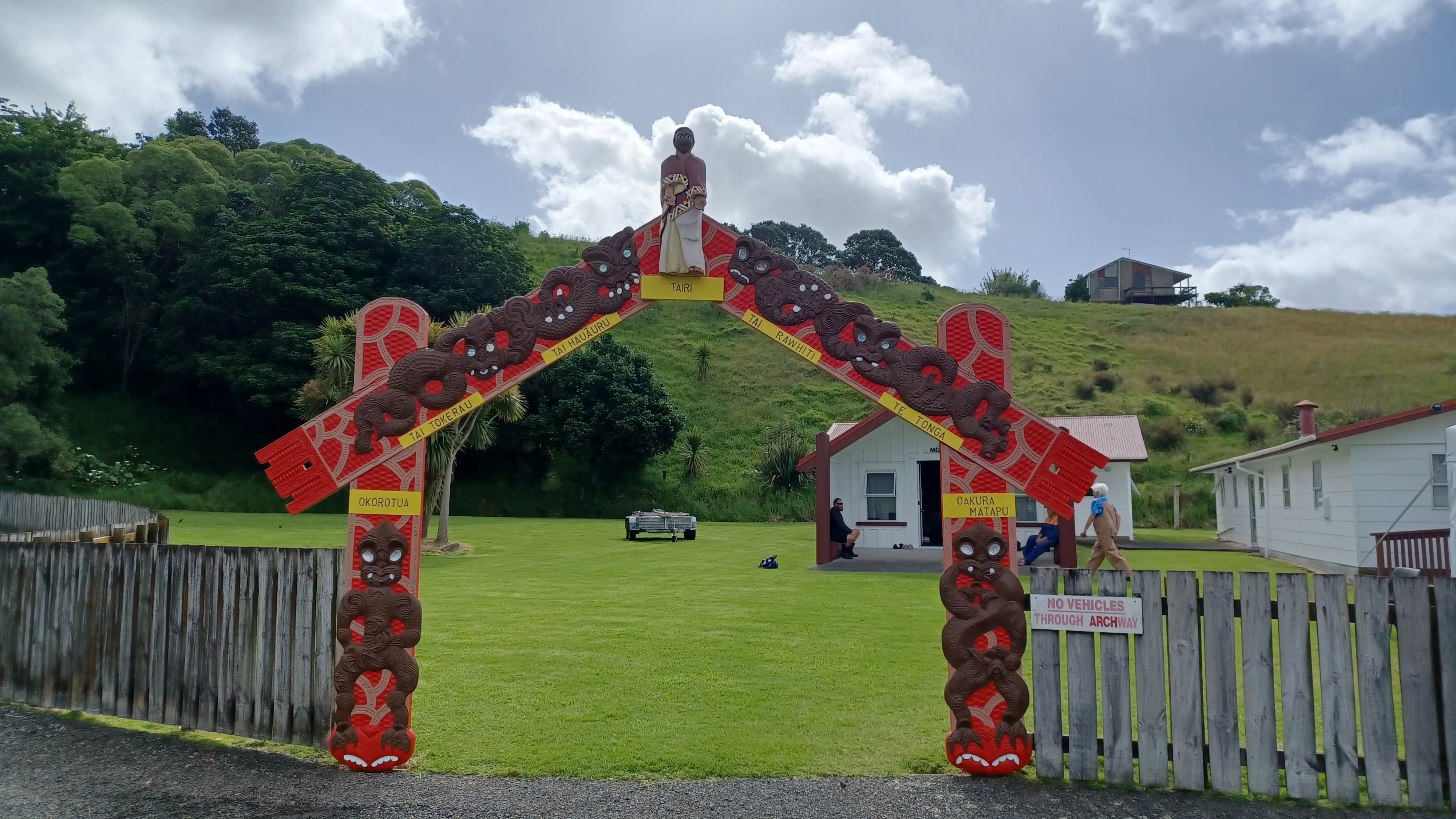
By the fourth day, the refreshed and repainted tomokanga was re-erected. At the apex the carvings of the tekoteko of Tairi is so fine, that even the bottoms of his feet and the folds of his taniko cloak are detailed, and so lifelike that it would seem like a strong gust of wind could make the folds of his cloak shift.



